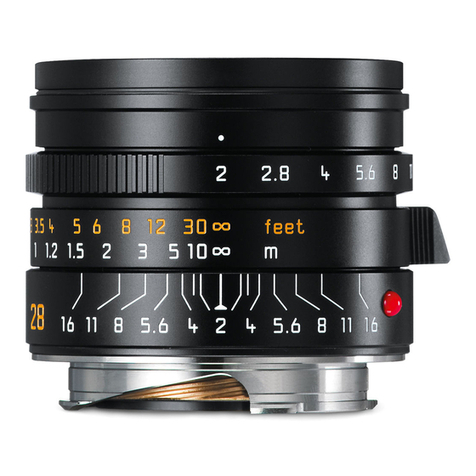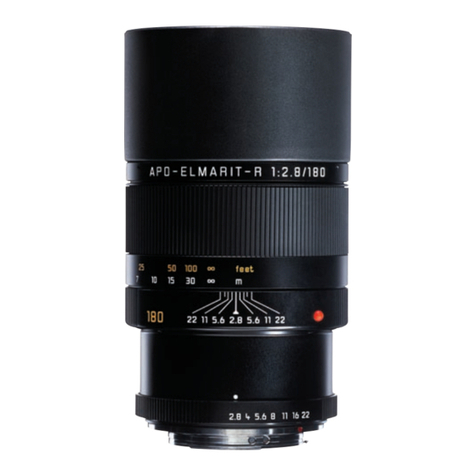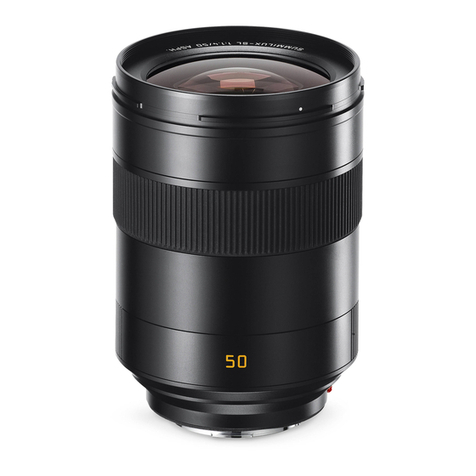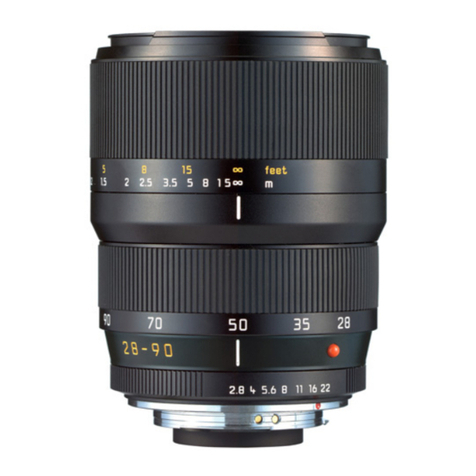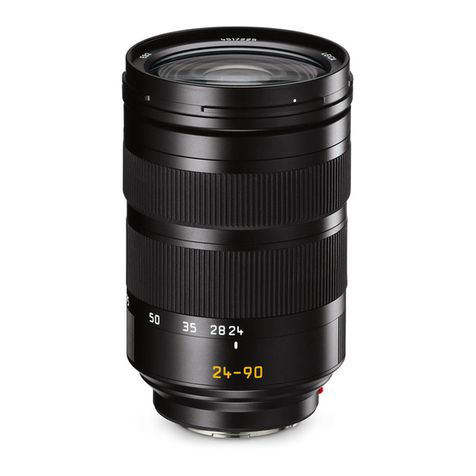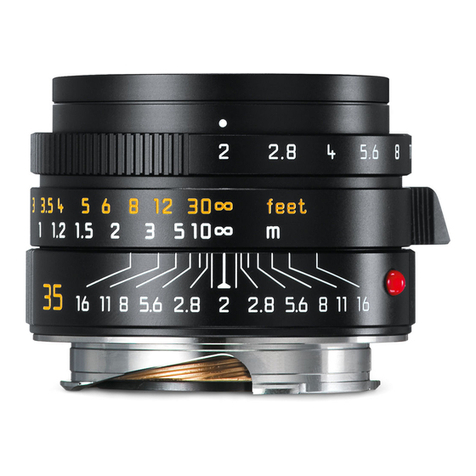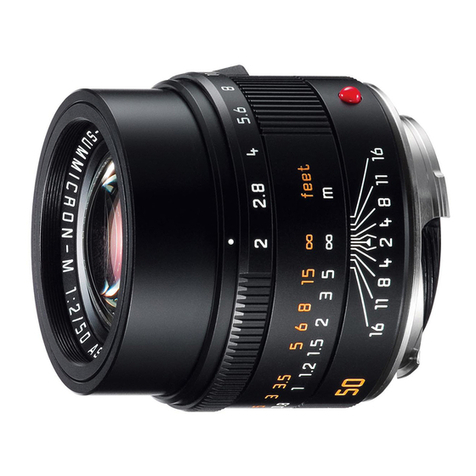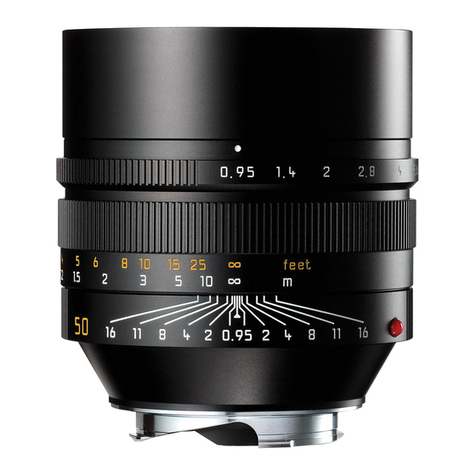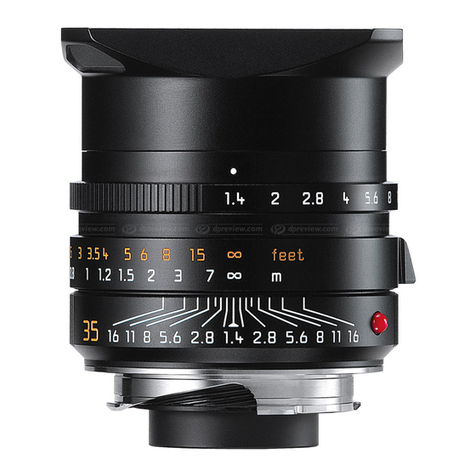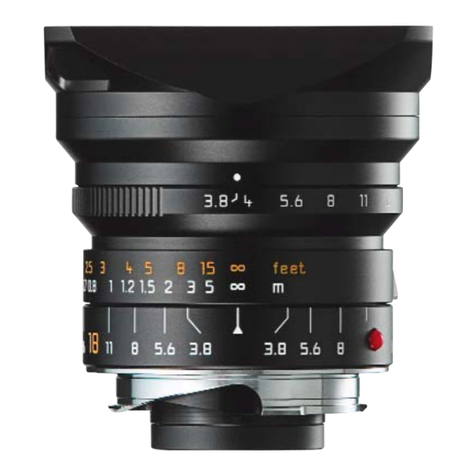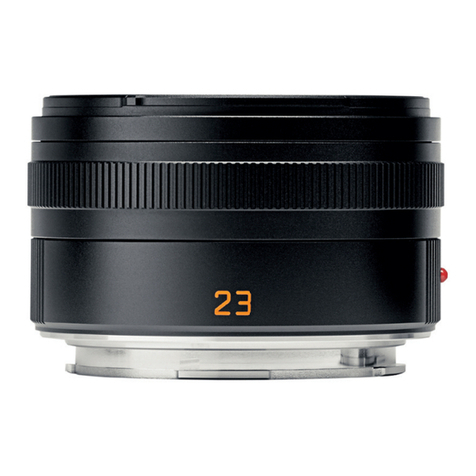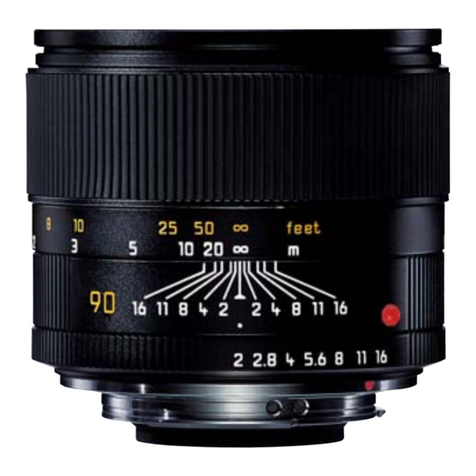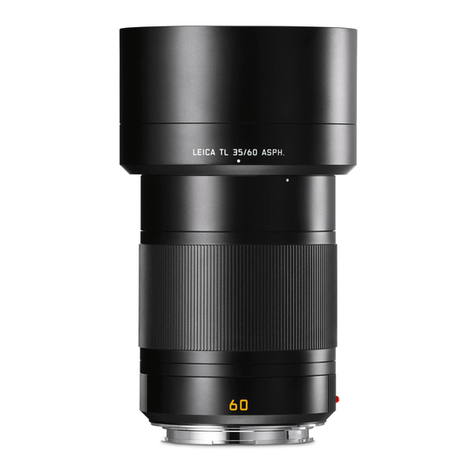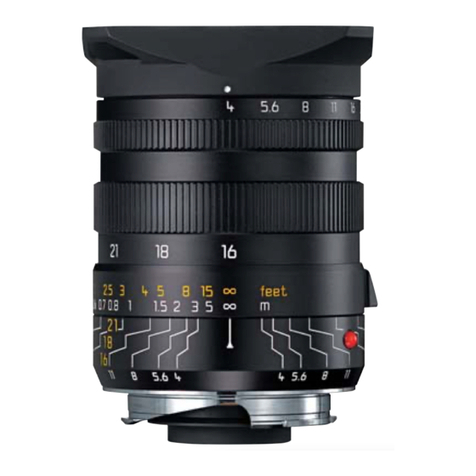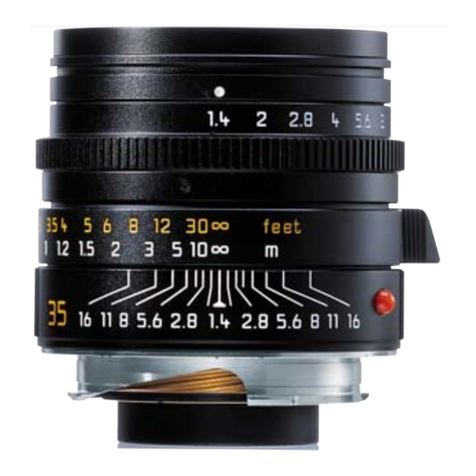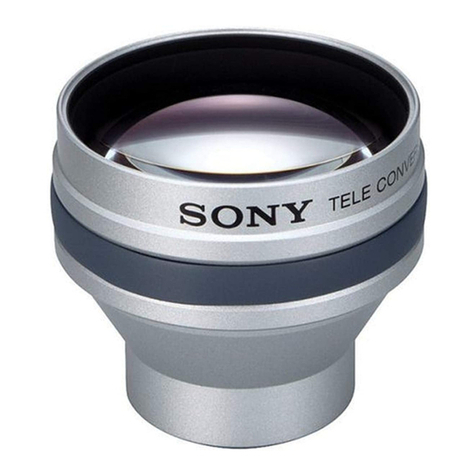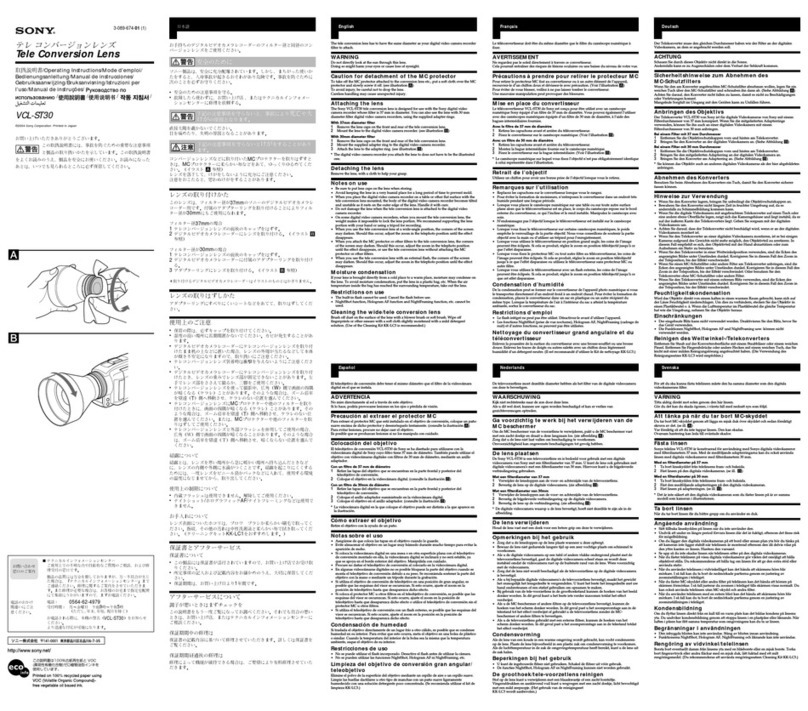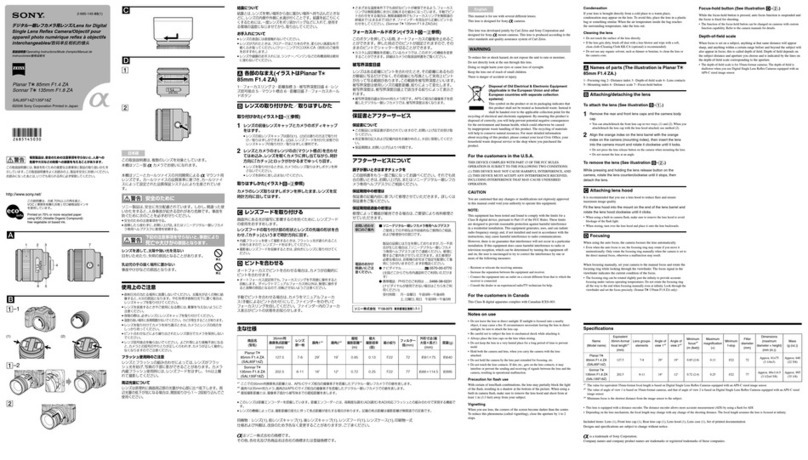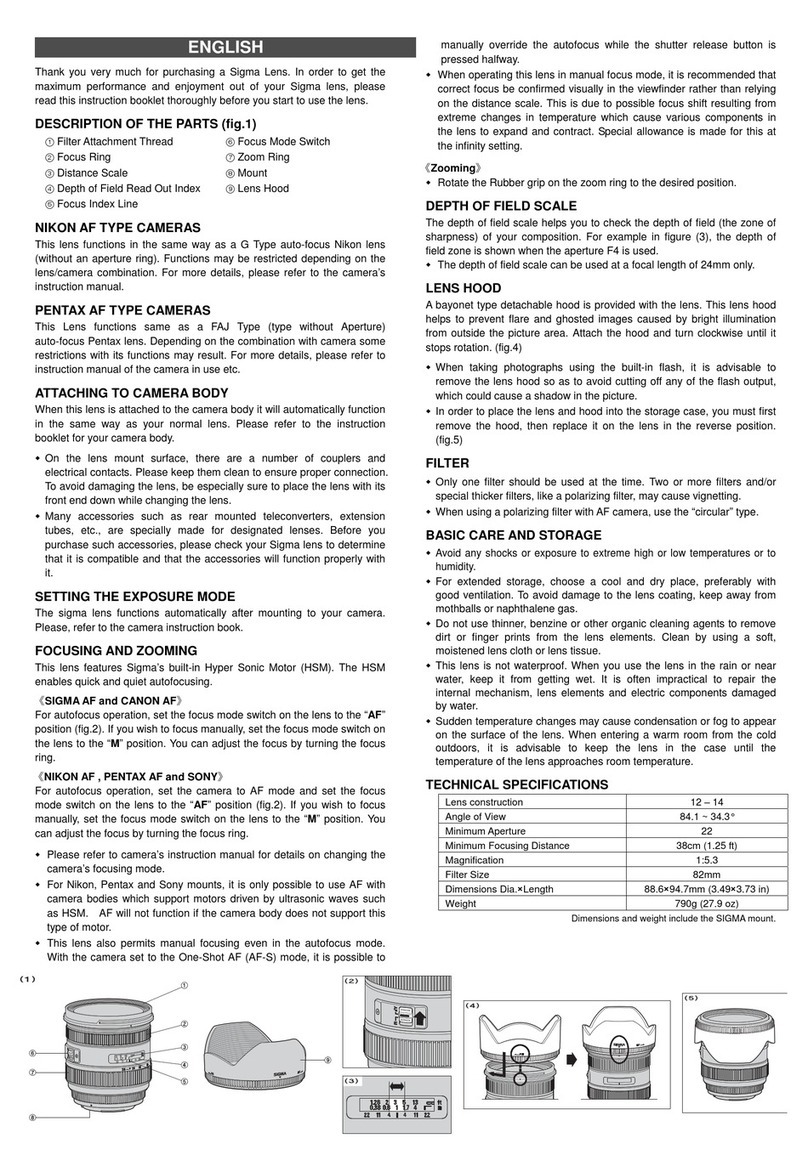Chapter 2 Leica R-Lenses 1
In older textbooks about photographic techniques there is
much space devoted to the choice of a lens. At first one
should buy a 50mm lens and use it for an extended period of
time. Having learned the language of photography, one is pre-
pared, and only then, to buy a second lens. The 90mm lens, or
as it was called when focal lengths were measured in centime-
ters, the 9cm lens, was the next step. Having bought this lens
and after studying the laws of perspective, one was ready for a
wide angle lens. And finally a 135mm telelens could be conside-
red. The first Leicaflex was introduced was only four focal
lengths (35-50-90-135) and this was done on purpose. Much of
what was known in the past, is still valid today. Lenses are like
persons. Only after a long period of companionship, the true
character can be seen and appreciated. A 90mm lens is a more
versatile tool than can be gleaned from the usual catalog des-
cription (useful for landscapes, architecture, snapshots,
animals). The 'ninety' is a lens that enables you to really investi-
gate the Leica style of photography. If you look at many pictu-
res, you will discover that often the image works overloaded as
so many parts of the image ask for attention. A ninety millime-
ter lens forces the photographer to a selective choice of sub-
ject matter and thus to exploit the space provided by the quite
small negative format to its best. Selective enlargement should
be avoided as much as possible, as any additional magnifica-
tion will degrade the optimum image quality. In this sense the
90mm is an excellent teacher
__Artistic reflections
The natural perspective is one where the viewing angle in natu-
ral space is identical to the angle of view when looking at the
picture. The eye has a viewing angle that is close that of a fish-
eye lens, but in practice the field of vision is much narrower.
Fundamental requirement for the correct perspective demands
that the eye should be positioned at the same location as the
entrance pupil of the lens. There is a simple equation that tells
you that the viewing distance (e) for the correct perspective
should be the focal length of the lens (f) times the negative
enlargement (v). As a formula: e = f times v. If you make a pictu-
re with a 50mm lens and wish to look at the negative directly,
your eye should also be 50mm from the negative. But the mini-
mum distance of distinct vision is 250mm and so the negative
must be enlarged 5 times. We need a 5x magnifying glass to
see the picture with the correct perspective. Or you should
enlarge the negative 5 times to a print to a size of 13x18cm.
The well known picture format of 10x15cm requires a 4 x enlar-
gement and is too small. It implies that you will look at the pic-
ture with an extended space perception. You look at the picture
with a wide angle perspective so to speak. When a format of
13x18cm is used and the picture is made with a 50mm lens,
then this 5 times enlargement will provide for a correct and
natural perspective. The picture format of 13x18cm has a dia-
gonal with a length of 222mm and that is quite close to the
minimum distance of distinct vision of 250mm. The angle of
view is now about 50 degrees and this corresponds to the
angle of view of a 50mm lens (45 - 47 degrees). But this mini-
mum distance is very often quite uncomfortable in many situa-
tions. You may not be able to view the whole picture at once
without moving your eyes and the distance of 250mm is quite
short, if you are above 20 years old. Many studies have found
that he most comfortable viewing distance is twice the value of
the minimum distance. If you want to keep the natural perspec-
tive, you need a lens with a focal length that is twice the value
of the diagonal of the negative format, thus 2 x 43mm. A focal
length of 86mm, then would be the ideal lens. This somewhat
surprising conclusion can be supported by the following obser-
vations. The focal length of 90mm is often described as the
best for portraiture. This is true, but why? Let us make a head
and shoulder portrait at a distance of 2 meter with a 100mm
lens, and enlarge this negative to a print size of 13x18cm. The
formula tells us that we need to look at the picture from a
distance of 5 x 100mm, or 50cm. If we now take the same pic-
ture with a 50mm lens at one meter distance, the viewing
distance should be 25cm. But we look at the portrait often at a
distance from 50cm as this is more comfortable. Then we look
at the portrait with a wide angle perspective and the impact of
the image will be different from that taken with the 100mm
lens.
Perspective is independent from the focal length. If we photo-
graph a subject from the same position with a 28mm lens and a
300mm lens, the perspective is not changed, only the rate of
magnification. We can verify this, when we enlarge the 28mm
picture ten times. Let us now compare both pictures and we
see that they are both identical in size and perspective (depth
cues). The vertical angle of view of the 28mm lens is 46
degrees and that of the 300mm lens is 4.6 degrees. The vie-
wing distance for the enlargement of the negative with the
28mm lens is 28cm (10 times 2,8cm) and for the (not enlarged)
picture with the 300mm lens it is 30cm (1 times 30cm).
If we take pictures with lenses of different focal lengths at diffe-
rent distances to keep the size of the main subject at equal
size, the perspective will change of course. The perspective for-
mula tells that the perspective impression is only then a natural
one, if the viewing angle of the camera in space is the same as
the viewing angle of the eye at the picture. You can ensure this
when you carefully adjust these three important aspects: enlar-
gement factor, viewing distance and focal length. This is true
also when you project slides. The choice of the focal length
should always take into consideration the expected enlarge-
ment factor and the normal viewing distance. It cannot be a
coincidence that the 90mm lens was very popular with expe-
rienced photographers. And Leica has always offered a wide
selection of 90mm lenses, carefully tuned to different tasks. It
might be a fine exercise to use the 90mm exclusively for one
month and enlarge all pictures to a size of 13x18cm. The vie-
wing distance should be about 50cm. Then you really get used
to the correct perspective. A portrait taking with a 90mm has a
'flatter' perspective that is 'flattering' for the sitter.


